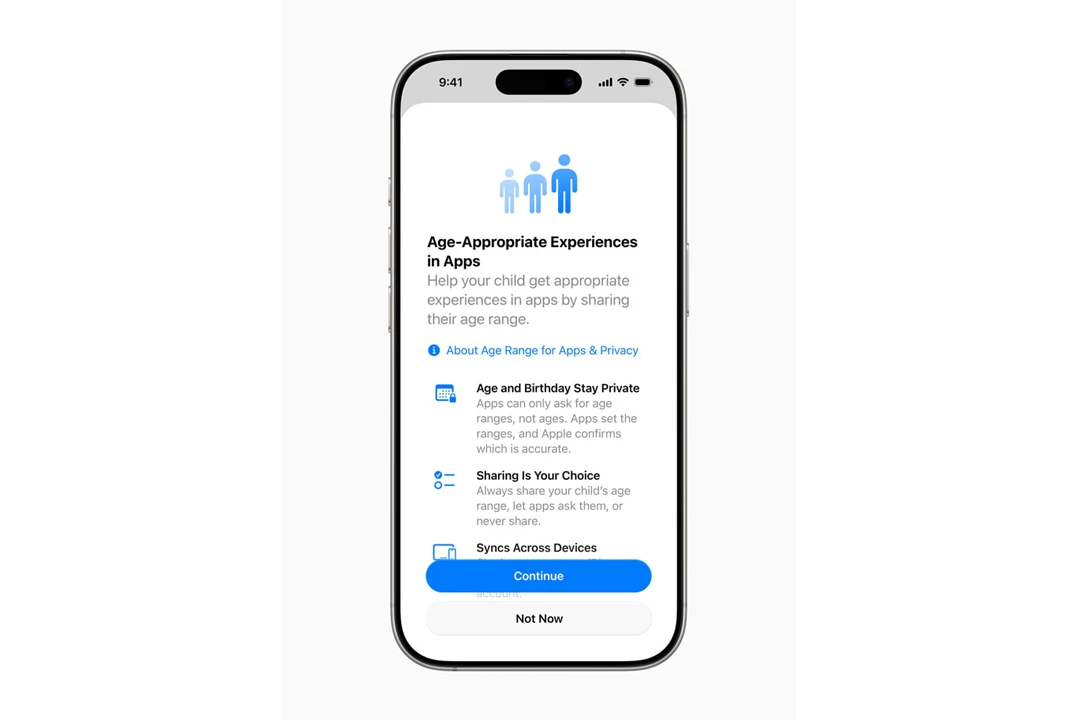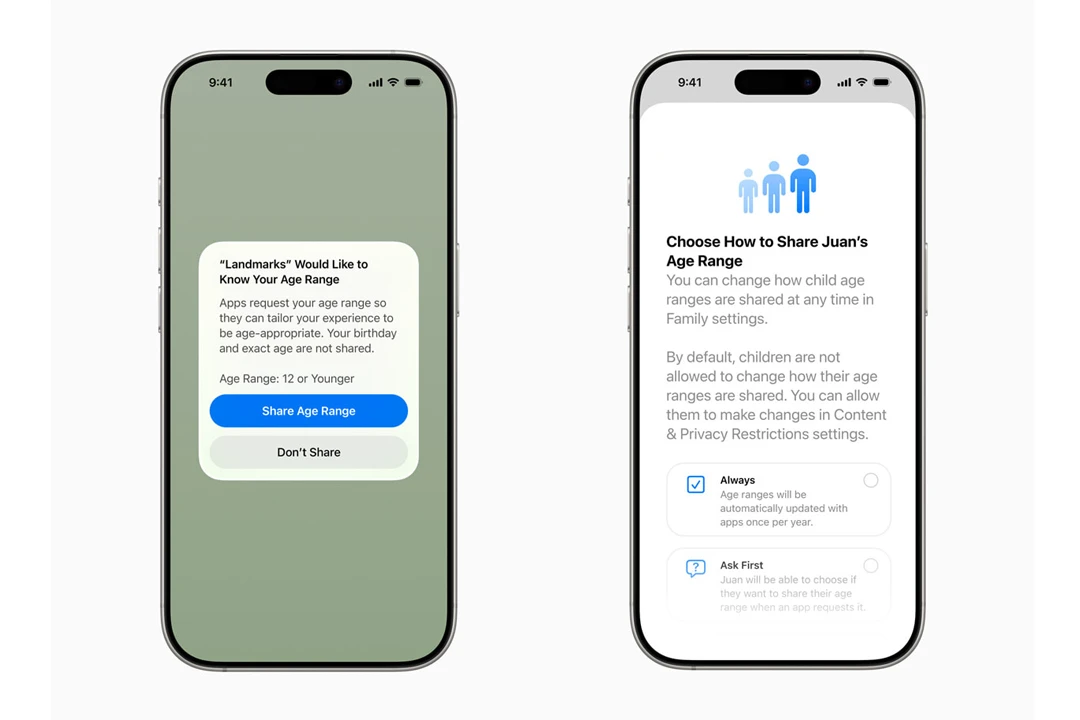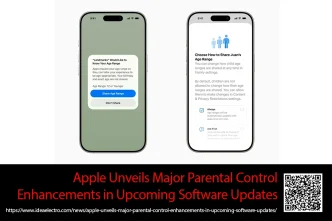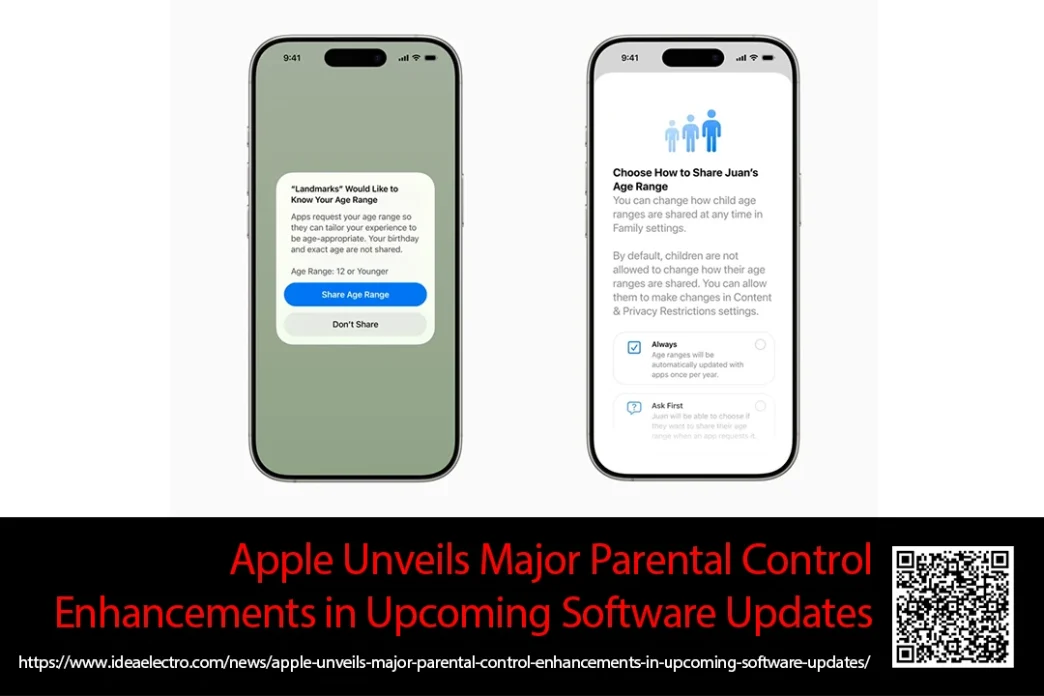Apple has announced a comprehensive suite of new features designed to help parents better protect their children and teens online. With the upcoming release of iOS 26, iPadOS 26, macOS Tahoe 26, watchOS 26, visionOS 26, and tvOS 26 this fall, the tech giant is furthering its commitment to user safety and privacy by expanding its parental control offerings. These enhancements, many of which were previously previewed, aim to provide families with stronger tools to ensure age-appropriate digital experiences from the moment a child begins using an Apple device.
The newly announced features build upon existing controls found in Apple’s Screen Time and App Store settings, with privacy and security remaining fundamental principles across all developments.
 Simplified Child Account Management
Simplified Child Account Management
Apple has long supported Child Accounts, which require linkage to a parent or guardian within a Family Sharing group. These accounts are mandatory for users under 13 and available up to age 18, helping parents maintain age-appropriate controls. The latest updates streamline the setup process for these accounts and make accessing parental controls more intuitive.
For example, parents can now postpone full account setup without losing essential protections—devices will automatically enable default safety settings. These changes are already live in iOS 18.4, iPadOS 18.4, and macOS Sequoia 15.4.
Parents are also gaining tools to ensure their child’s age is correctly registered. If a child under 13 is using a standard Apple ID, the system will prompt the parent to connect the account to a Family group, converting it into a Child Account with default protections automatically applied.
 Controlled Age Range Sharing with Apps
Controlled Age Range Sharing with Apps
A significant privacy-focused addition is the ability for parents to share a child’s age range with app developers without revealing the exact birth date. This is enabled through the new Declared Age Range API, which helps developers tailor content to age groups—such as 5–8 or 13–15—without collecting sensitive personal data.
Parents can control how often this information is shared—always, per request, or never—and adjust these settings at any time. By default, children cannot alter this sharing preference unless explicitly permitted under Content & Privacy Restrictions.
This system provides a balance between personalization and privacy, eliminating the need for apps to request full birth dates while allowing developers to maintain compliance and enhance user experience.
Expanded Protections for Teens
While Apple already requires Child Accounts for users under 13, the new update extends certain protections to all teens aged 13 to 17—even those using standard accounts. These protections include web content filters and Communication Safety tools.
Incorporating the newly introduced granular age ratings on the App Store, Apple is ensuring that adolescents receive guidance that aligns with their developmental stage and digital needs.
 More Detailed Age Ratings on the App Store
More Detailed Age Ratings on the App Store
Apple’s App Store will soon feature expanded age rating categories to improve content filtering and transparency. By year-end, apps will carry more specific ratings, including three distinct adolescent categories: 13+, 16+, and 18+. These finer distinctions will help families better evaluate an app’s suitability for their children and assist developers in labeling their apps more precisely.
These enhanced ratings will continue to integrate with parental controls such as Screen Time and Ask to Buy, giving parents stronger tools to manage their children’s digital lives.
Greater Control Over Child Communication
Apple’s Communication Limits feature is also receiving an update. Previously available for Phone, FaceTime, Messages, and iCloud contacts, this functionality will now allow parents to approve new contacts.
Children will be required to send a request before initiating communication with unknown numbers. Parents can approve with a single tap within Messages. With the introduction of PermissionKit, this approval system extends to third-party apps, allowing children to request permission to connect, follow, or message others.
Additional Family-Focused Enhancements
Several updates are being made to the App Store, Screen Time, and Communication Safety systems:
- App Store Transparency: Product pages will now indicate whether apps include user-generated content, messaging, ads, or in-app content controls like parental settings.
- App Visibility Restrictions: Apps exceeding a child’s content restrictions will be hidden from the App Store’s featured tabs such as Today, Games, and Apps.
- App Exceptions: Parents using Ask to Buy can grant exceptions for higher-rated apps and can later revoke access through Screen Time, removing the app from the child’s device.
- Enhanced Communication Safety: The system now detects nudity in FaceTime video calls and Shared Albums, blurring inappropriate content and warning users.
Building on Existing Safety Tools
Apple’s expanded toolkit builds on a wide array of already-available features designed to protect children while upholding their privacy:
- Age Ratings & Content Filters: Help parents assess app suitability.
- Ask to Buy: Allows parental oversight of app purchases.
- Find My: Lets parents locate family members via device tracking.
- Communication Safety: Warns children about sensitive visual content.
- Made for Kids: A curated section in the App Store featuring highly regulated apps.
- Ad Restrictions: Limits ad targeting and prevents tracking of kids’ behavior.
- Data Sharing Controls: Let parents manage access to location and sensitive data.
- Reporting Tools: Allow users to flag safety concerns in third-party apps.
Developer Tools to Support Parental Oversight
Apple is also empowering developers to support family safety through a range of APIs and frameworks:
- ScreenTime Framework: Lets developers integrate screen time tracking and restrictions.
- Family Controls & Device Activity APIs: Enable custom parental control implementations.
- SensitiveContentAnalysis Framework: Helps detect and blur explicit images.
- Media Ratings API: Allows developers to respect family-defined media restrictions in apps.
As digital safety becomes an increasingly pressing concern for families, Apple’s fall software updates promise a more secure and privacy-focused online environment for kids and teens. With both systemic protections and developer support, Apple continues to position itself at the forefront of child safety in technology.
Source: apple.com



